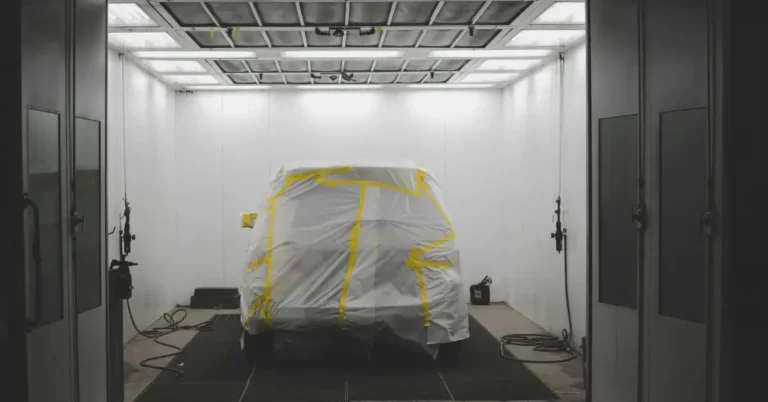Winter can be a challenging time, especially when it comes to your vehicle. Snow, ice, and freezing temperatures can shorten your car’s lifespan and the driving experience. Knowing how to maintain a car in Winter is essential to ensure a safe and smooth driving experience in my opinion.
We understand that doing car maintenance throughout the colder months might seem difficult, but that’s why we’re here to provide you with practical tips to keep your car running even during the coldest month. Today, we’ll discuss crucial aspects to prevent common wintertime issues. Grab your pen and Noticeblock and explore the best practices for Maintain a car in winter.
Understanding to Maintain a Car in Winter
Temperatures drop, Snow begins to fall, that’s where many people wonder, how to maintain a car in winter and to transport your loved ones Safe from A to B? No worries, we will give you a guideline how to maintain a car in winter.
Why is Winter Maintenance Important?
Winter maintenance is crucial because it helps prevent many cold-weather-related issues that cause breakdowns or accidents. Snow, ice, and freezing temperatures can harm your car, but by taking proper steps to maintain a car in winter, you can keep your car reliable throughout the season.
Common Car Problems in Winter
Battery problems
- Cold weather can reduce battery capacity and make it harder to start your vehicle. Regularly checking the battery and keeping it fully charged can prevent this issue.
Tire pressure
Tire pressure tends to drop in colder temperatures. Checking and adjusting your tire pressure regularly can help improve traction and prevent accidents.
Frozen WIndshield wipers
When ice forms on windshield wipers, it can reduce their effectiveness and cause streaks on your windshield. Keep your windshield wipers clean and consider using winter-specific wiper blades.
Salt and Corrosion
Road salt can cause rust and corrosion to your car’s exterior and undercarriage. Regularly washing your car can help prevent this issue.
Doors which doesn´t open
Frost can cause the Rubber Door sealings to stick to the door. Sealing them with proper tools will prevent that.
Frozen Parts
While you Maintain a car in winter, it’s not uncommon for parts of your vehicle to freeze.
Here are some tips to prevent and address frozen parts:
Frozen fuel lines
Keep your fuel tank at least half full to prevent moisture from freezing inside the lines.
Frozen locks
To prevent frozen locks, apply lock de-icer or silicone spray to the keyhole and key. If a lock is already frozen, try using warm water or a special liquid to unfreeze it.
Frozen windows
To prevent windows from freezing, try applying a mixture of water and vinegar on them. If they are already frozen, use a plastic ice scraper or a mixture of water, denatured alcohol, and window cleaner to remove the ice.
By understanding the importance of Mantain a car in winter, you can ensure that your vehicle remains safe and reliable throughout the colder months. Stay prepared and check your vehicle regulary any issues.

Preparing Your Car for Winter
Winter can be harsh on our cars, that’s why the next section is about how to maintain a car in Winter, focusing on three key areas: checking antifreeze levels, tire considerations, and battery testing.
Checking Antifreeze Levels
Antifreeze is crucial in keeping your engine from freezing during cold temperatures. Before winter hits, it’s essential to check your vehicle’s fluids, including antifreeze.
To check the antifreeze level is crucial while you maintain a car in winter, make sure your engine is cool and locate the coolant reservoir. You should see marking lines on the reservoir indicating the proper level. If it’s below the recommended level, add a 50/50 mix of water and antifreeze. Keep in mind to use the correct type of antifreeze for your car, as mentioned in your owner’s manual while this step is crucial for Maintain a car in winter.
Tire Considerations
Tires play a significant role in safety and proper traction during winter. It’s important to check your tire pressure regularly, as cold temperatures can cause air pressure to drop. In winter conditions, a good set of winter tires can provide better grip and performance. Depending on your location, you may want to consider investing in studded winter tires for icy roads or sticking with standard winter tires if snow is more common.
When inspecting tires for winter, look for the following:
- Tread depth: 4/32″ or deeper is recommended for winter
- Cracks or bulges: indicating a weakened tire structure
- Proper inflation pressure: Check the owner’s manual for your vehicle’s recommended tire pressure
Battery Testing
Cold temperatures can be particularly tough on car batteries. Battery capacity tends to decrease with lower temperatures, leading to a higher risk of a dead battery. To prevent being stranded with a no-start situation, testing your battery before winter is crucial.
How to check your battery health
- Turn off your engine and accessories (lights, radio, etc.)
- Use a multimeter to measure the battery voltage
- A healthy battery should read at least 12.6V
If the battery voltage is lower or you notice visible signs of wear (swollen battery case, corroded terminals), consider replacing the battery immediately. Additionally, ensure that cables are tight and free of corrosion. With these simple steps, we can better prepare our cars to withstand the challenges of the winter season.

Steps to Maintain a Car in Winter before the Cold comes
- Wash and wax your car
- Check the Tread of your Winter Tires
- Test your Car Batterie
- Clean Batterie Terminals
- Coat Batterie Terminals with Batterie Coating Wax
- Lubricate Window and Door Tracks
- Coat the weather stripping and the mating door surfaces with silicone
- Lube the Door Locks
- Lube Latches and Hinges
- Check Coolant
- Switch to Winter Wiper Blades
- Change Foot Mates to Rubber
- Check (and Replace) Your Hood Lifts
- Replace the Cabin Air Filter (Heater relief)
- Assemble A Winter Survival Kit
Adapting Your Driving for Winter
It’s crucial to learn how to adapt your driving style and handle emergencies during these chilly months.
Driving Techniques
During Winter, it’s important to drive smoothly and avoid abrupt maneuvering. Be gentle with your feet on the pedals and your hands on the steering wheel. This helps to prevent skidding on icy roads. Here are some driving techniques to follow:
- Accelerate and decelerate slowly: Doing this provides more traction and avoids skidding.
- Increase following distance: Allow extra space between your car and the one ahead to provide more time to react.
- Avoid sudden steering: Sudden steering can induce a skid, so be gentle with the steering wheel.
Emergency Situations
Despite our best efforts, emergencies may still occur during winter drives. Here’s how to handle them:
- Skidding: If your vehicle starts to skid, remain calm and do not slam on the brakes. Instead, steer in the direction you want the car to go, and slowly ease off the accelerator.
- Low visibility: In case of fog or heavy snowfall, turn on your low-beam headlights and your fog lights, if equipped. This increases visibility for both you and other drivers.
- Handling breakdowns: If your car breaks down in winter, turn on your hazard lights and make your car visible by using reflective triangles or flares. Stay with your vehicle and call for assistance.
By following these driving techniques and being prepared for emergency situations, you can ensure your safety on the road during winter.

After Winter Care
As we all know, learning to maintain a car in winter is crucial for a vehicle’s longevity. In this section, we’ll be discussing the necessary steps to take after the winter season is over.
Dealing with Salt Damage
After the snow has melted, the first step for us is to tackle the salt damage that might have affected our car’s exterior and undercarriage. Salt can cause rust and corrosion, which can weaken the metal structure of the car.
- Washing: Give the car a thorough wash, making sure to clean the undercarriage and wheel wells with a high-pressure hose.
- Drying: It’s important for us to dry the car using a clean microfiber cloth to prevent water spots and leftover salt residue.
- Waxing: After drying, apply a high-quality wax to protect the paint and prevent any further salt damage.
Inspection After Winter
Next, we must perform a thorough inspection of our car to ensure everything is running smoothly after the harsh winter months. Here are some key components and systems to Maintain a car in winter:
Tires
Examine the tire pressure and tread wear. Cold weather may have deflated them, and driving in snow and ice can wear them down quickly.
Battery
Check the battery’s charge and cleanliness. The cold weather may have weakened the battery, and winter driving puts a strain on its lifespan.
Fluids
Winter may cause coolant and other fluids to become contaminated or lose their effectiveness. Flush and refill them as needed.
Brakes
Ensure the brakes are in good condition, as the salt and snow may have caused corrosion or wear.

Here’s a quick summary table of the after-winter care recommendations:
Steps to Maintain a Car in Winter when the cold is gone
- Wash, polish and wax the car to make sure all stains and salts are washed away
- Check tire pressure (see in the holm on your door)
- Inspect batteries, if it got harmed during winter
- Check Fluids (Motor, Brake, Gear, Cooler, and Wiper)
- Inspect Brakes (Cracks or damages)
- Change Foot Mates back to fabric
- clean all seals and look out for damages
- Look out for damages from wild animals
- Check the Painting for rust
FAQ
What should I have in my winter car kit?
– Flashlight with extra batteries.
– First-aid kit.
– Booster cables and windshield brush/scraper.
– Drinking water and high-calorie, non-perishable food (trail mix, energy/protein bars)
– Sand or cat litter for traction.
– Cell phone adapter/charger.
What is winter mode in car?
More specifically, it reduces the engine’s power and the accelerator’s responsiveness to help prevent skidding, adjusts the transmission’s settings to keep the engine speed down, and modifies torque distribution to avoid overloading the wheels that lose traction.
Is traction control good for winter driving?
If you are stuck in the snow, wheelspin can sometimes help you get unstuck. Traction control will prevent wheelspin, so if you turn it off, motion might return to your car. Just be sure your car is actually moving.
I hope my tips will help you to get safe through the cold days and let you enjoy the Winter time with your car.
Do you have any further questions or even tips for me? Let me know, I would be glad to hear from you.
See you next time when it says again:
Let´s Ride! (Safe – while it could be slippery :-))






